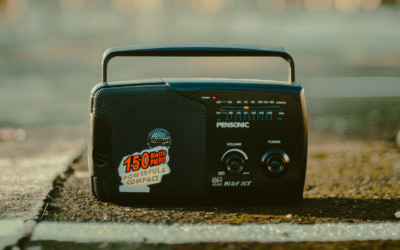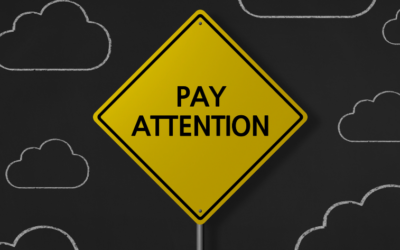Effective communication has become more critical in our fast-paced and interconnected world. The ability to express ourselves clearly and connect with others is crucial in our personal relationships or professional settings. However, many of us struggle with communication weaknesses that hinder our success and relationships. Identifying and addressing these weaknesses is the first step toward improvement.
This article will explore the importance of effective communication, recognize the signs of poor communication, discuss common weaknesses, and provide strategies to identify and overcome these challenges.
Understanding the Importance of Effective Communication
Communication serves as the foundation for building solid and meaningful connections. In our relationships, effective communication enhances trust, understanding, and intimacy. It allows us to express our needs, listen to others, and resolve conflicts. Similarly, effective communication is the key to collaboration, innovation, and success in professional settings. It enables us to convey ideas, influence others, and build productive teams.
The Role of Communication in Personal Relationships
In personal relationships, communication is the lifeline that keeps the connection strong. We deepen our emotional bond with loved ones by expressing our thoughts, feelings, and desires. Effective communication nurtures empathy, promotes mutual respect, and fosters a supportive environment. On the other hand, poor communication can lead to misunderstandings, resentment, and distance.
Imagine a scenario where a couple is going through a rough patch in their relationship. They have been arguing more frequently and feel disconnected from each other. However, they can openly express their concerns, fears, and desires through effective communication. By actively listening to each other and validating their emotions, they can find common ground and work towards resolving their issues. This process strengthens their bond and helps them rebuild trust and intimacy.
Furthermore, effective communication in personal relationships involves expressing oneself and actively listening to the other person. We can avoid misinterpretations and assumptions by truly hearing and understanding their perspective. This level of communication fosters a sense of validation and empathy, creating a safe space for open and honest conversations.
The Role of Communication in Professional Settings
In professional settings, communication is the key to success. It enables us to collaborate with colleagues, pitch ideas, and negotiate deals. Practical communication skills, such as active listening, clear articulation, and persuasive messaging, are highly valued by employers and contribute to career advancement. Conversely, poor communication can lead to misinterpretations, conflicts, and missed opportunities.
Consider a workplace where employees are encouraged to communicate openly and transparently. This fosters a culture of trust and collaboration, where individuals feel comfortable sharing their ideas and concerns. As a result, teams can work together more effectively, leveraging each other's strengths and expertise. This synergy leads to increased productivity, innovation, and organizational success.
Moreover, effective communication in professional settings goes beyond verbal interactions. It also encompasses non-verbal cues, such as body language and facial expressions. Being aware of these cues and using them effectively can enhance the impact of our messages and help build rapport with colleagues and clients.
Effective communication is vital in personal and professional relationships. It strengthens connections, fosters understanding, and drives success. By continuously improving our communication skills, we can enhance our relationships, advance our careers, and positively impact all aspects of our lives.
Recognizing the Signs of Poor Communication
Recognizing the signs of poor communication is crucial in addressing our weaknesses. We can proactively improve our communication skills by being aware of these indicators.
Poor communication can manifest in various ways, both verbally and non-verbally. Identifying your communication weaknesses and looking for these signs can help us pinpoint areas for improvement and work toward effective communication.
Verbal Communication Pitfalls
One common sign of poor communication is frequent misinterpretation of our words. If others often misunderstand our intentions or struggle to follow our message, it may indicate a need for improvement.
Also, verbal communication weaknesses can be observed in how we express ourselves. Using vague language can lead to confusion and miscommunication. It is essential to be clear and concise in our speech to ensure our message is understood.
Speaking too quickly can also hinder effective communication. When we rush through our words, it becomes challenging for others to keep up with the information conveyed. Taking the time to speak at a moderate pace allows for better comprehension and engagement.
Another sign of poor verbal communication is a lack of assertiveness. If we struggle to express our thoughts and opinions confidently, it can hinder our ability to communicate with others effectively. Developing assertiveness skills can help us convey our ideas more clearly and assert our needs and boundaries.
Non-Verbal Communication Mistakes
Non-verbal cues play a significant role in our communication. Having difficulty maintaining eye contact, displaying appropriate body language, or controlling facial expressions can convey a lack of confidence or credibility.
Eye contact is an essential aspect of non-verbal communication. Avoiding eye contact can give the impression of disinterest or lack of engagement in the conversation. Maintaining appropriate eye contact shows attentiveness and conveys that we value the interaction.
Body language is another crucial element of effective communication. If our body language is closed off, such as crossing our arms or avoiding open postures, it can create a barrier between us and the person we are communicating with. On the other hand, open and relaxed body language promotes a sense of openness and receptiveness.
Controlling facial expressions is also essential in non-verbal communication. Our facial expressions can reveal our true emotions, even if our words say otherwise. Being mindful of our facial expressions and ensuring they align with our intended message can help avoid misunderstandings.
Furthermore, non-verbal communication weaknesses can also be observed when our non-verbal signals contradict our verbal communication. Inconsistencies between what we say and how we say it can create confusion and undermine our credibility.
Struggling to pick up on non-verbal cues from others can hinder effective communication. Non-verbal cues, such as gestures, tone of voice, and facial expressions, provide valuable information about a person's emotions and intentions. Attention to these cues allows us to respond appropriately and engage in meaningful conversations.
Recognizing the signs of poor communication is essential for personal and professional growth. By identifying areas of weakness in verbal and non-verbal communication, we can take proactive steps to improve our skills and foster better connections with others.

Common Communication Weaknesses
While communication weaknesses can vary from person to person, some are prevalent across different contexts. Let's explore two common weaknesses that many individuals encounter.
Lack of Clarity and Precision
A lack of clarity and precision in communication can lead to confusion and misunderstandings. If our messages are ambiguous, vague, or lack specific details, it can hinder effective communication. This weakness can manifest in various ways, such as using unclear language, failing to provide sufficient context, or not being specific enough in our explanations.
For example, imagine a team leader assigning a task to a team member without clearly outlining the expectations and deliverables. The team member may proceed with their assumptions, resulting in a misalignment of goals and outcomes. In this case, the lack of clarity and precision in the initial communication can lead to inefficiency, frustration, and a waste of resources.
To overcome this weakness, practicing clear and concise expression is essential. This involves taking the time to articulate our thoughts and ideas in a way that is easily understandable to others. It also requires actively seeking feedback and clarifying any uncertainties to ensure our intentions are understood and minimize the risk of miscommunication.
Poor Listening Skills
Listening is an integral part of effective communication. When we struggle to listen attentively, interrupt frequently, or fail to provide feedback, it hampers meaningful dialogue. Poor listening skills can hinder our ability to understand others, empathize with their perspectives, and collaborate effectively.
Improving our listening skills involves being fully present, giving others our undivided attention, and demonstrating empathy and understanding. It requires actively engaging in the conversation, asking relevant questions, and paraphrasing to confirm our understanding.
For instance, imagine a colleague sharing their ideas during a team meeting, but others are constantly interrupting or not paying attention. This lack of active listening can make the colleague feel undervalued and discouraged from contributing further. By developing better listening skills, individuals can create a supportive and inclusive environment where everyone's ideas are heard and respected.
Furthermore, poor listening skills can also lead to misunderstandings and conflicts. When we fail to listen attentively, we may miss important details or nuances in the message, resulting in misinterpretations. This can strain relationships and hinder effective collaboration within teams or organizations.
To overcome this weakness, it is crucial to practice active listening. This involves focusing on the speaker, maintaining eye contact, and avoiding distractions. It also requires being open-minded, suspending judgment, and seeking to understand the speaker's perspective fully. By honing our listening skills, we can foster stronger connections, build trust, and enhance the overall quality of our communication.
The Impact of Communication Weaknesses
Understanding the impact of communication weaknesses can motivate us to address them. These weaknesses can significantly affect our personal relationships and professional success.
Effects on Personal Relationships
Poor communication in personal relationships can cause misunderstandings, conflict, and strain the emotional connection. It can lead to feelings of frustration, resentment, and isolation. By addressing and improving our communication weaknesses, we enhance the quality of our relationships and create a healthier and more fulfilling connection with our loved ones.
Effects on Professional Success
In professional settings, communication weaknesses can hinder career growth and limit opportunities for advancement. Poor communication can impede effective teamwork, reduce productivity, and even damage professional reputation. By developing strong communication skills, we can gain a competitive edge, build positive relationships with colleagues, and increase our chances of success.

Strategies for Identifying Your Communication Weaknesses
Identifying our communication weaknesses is the first step toward improvement. By employing these strategies, we can gain valuable insights into our areas of improvement.
Self-Evaluation Techniques
Self-evaluation involves reflecting on our communication patterns, habits, and behaviors. We can consider situations where we may have faced challenges or received feedback. Taking note of repetitive communication breakdowns, such as frequent misunderstandings or conflicts, can help identify specific areas for improvement.
Seeking Feedback from Others
Feedback from others can be invaluable in identifying our blind spots and weaknesses. Engaging in constructive conversations with trusted individuals who provide honest feedback can give us a fresh perspective on our communication style. Seeking input from personal and professional relationships allows us to comprehensively understand our strengths and weaknesses.
Identifying our communication weaknesses is the first step toward growth and improvement.
By recognizing the importance of effective communication, understanding the signs of poor communication, acknowledging common weaknesses, and utilizing strategies for identification, we can embark on a journey to becoming better communicators. Investing in our communication skills enhances our personal and professional relationships and opens doors to new opportunities and success.
Explore the Path to Success with CorEthos
Thank you for journeying with us through this exploration of ideas. Your presence here is a testament to a shared passion for reimagining business, and it resonates with the very essence of CorEthos: bringing humanity back to business.
Perhaps the curiosity that brought you here still burns brightly, yearning for further discovery. In that case, we invite you to delve into our blog, where each article opens new doors to understanding, insight, and growth. They are tailored to leaders like you, eager to unravel the complex tapestry of today's business world.
If you find yourself intrigued by the delicate science behind communication and leadership, why not embark on a journey of discovery with our newsletter? Subscribing is like opening a treasure chest filled with wisdom that connects you to the essence of collaboration and community.
Intensify Your Leadership Journey with Our Mastermind Program
Our newly launched Mastermind Program provides a focused setting for tackling challenges like honing effectiveness, inspiring your team, and mastering the art of delegation. It's a unique space where business acumen meets human-centered values, delivered with the same quality and integrity you expect from CorEthos. Ready to dive deeper into your leadership potential?
We Would Love to Get to Know Your Challenges Better!
Challenges in business? We see them not as stumbling blocks but as opportunities for transformation. Your unique path awaits, beginning with a complimentary consultation with CorEthos. We'll build bridges over obstacles and forge a trail to success, leveraging our three foundational pillars.
Your adventure with CorEthos doesn't have to end here. Let's continue to build, learn, and grow together, reflecting on what makes your business uniquely human. We are your compass, guiding you through the challenges and celebrating the triumphs. Let's begin this exciting journey today.



